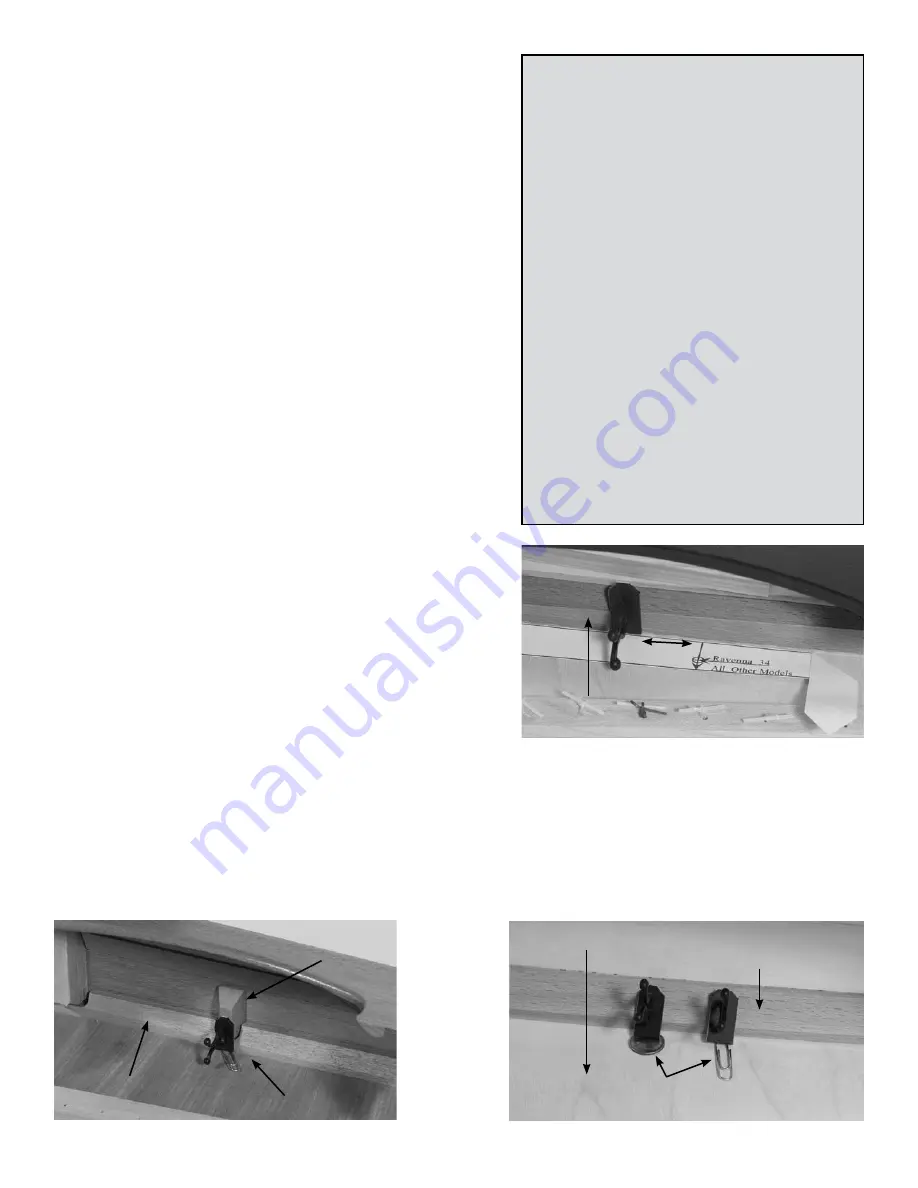
3
Step 3: Mark Pickup Element and Harness Clip Locations
Note:
The pickup model P10 (for 24-30 string harps) has three pickup
elements and uses three short harness clips. The P20 (for 32-40 string
harps) has four elements and usually uses four short clips, with the ex-
ception of pickups being installed in the Dusty Strings model FH36S,
which uses three harness clips. Some non-Dusty harp models (like the
Lyon and Healy Ogden) have internal body ribs that will require tall
harness clips. We’ve included 3 of these with the P20 pickup.
Find the pickup locating template provided for your model in
1.
the installation kit. Poke an awl or a nail through any circles that
are labeled for your harp model.
Fold the template on the dotted line near its pointed end. Tape
2.
the fold flat.
Slide the template into the harp through the bottom soundhole,
3.
folded end first.
Place the template on the back of the soundboard with the edge
4.
against the soundboard lining (the strip of wood that covers the
joint between the soundboard and the side of the harp) on the
left side of the harp
(see figure 4).
Position the template so the
folded end points directly at the highest F (blue) string. Tape
the template in place.
Mark a pencil dot through each of the holes you made in the
5.
template.
For all Dusty Strings models except FH36S:
6.
Mark an ‘X’ on the
soundboard lining approximately 1
"
toward the base of the harp
from each element location. This location is approximate, and
should be adjusted to avoid placing the clips in contact with any
other internal bracing. The clips are 1
"
tall.
For FH36S only:
7.
You will install three clips on the small finger
braces running perpendicular to the soundboard lining
(see
figure 5).
Carefully remove template from inside the harp.
8.
You should now have 3 or 4 (depending on model) clearly vis-
9.
ible pencil dots on the soundboard and corresponding ‘X’ marks for the harness clips on the lining.
Step 4: Attach Harness Clips
Note:
Please read this section carefully before attaching clips.
Place a paperclip or thin coin on the soundboard under the lowest ‘X’ mark on the soundboard lining to act as a
1.
spacer. This is to prevent the harness clip from touching the soundboard and causing unwanted vibration.
Remove the paper backing from the self-adhesive patch on one of the harness clips.
2.
Don’t have a Dusty Strings harp?
Before gluing the pickup elements to the sound-
board of a non-Dusty Strings harp, we advise
using double-stick tape to temporarily place
the elements on the outside of the soundboard
in the same positions they would be in on the
inside. Use the template as well, so you can find
these locations when you permanently install
the pickup inside. You can then plug into your
amplifier and see how it sounds. You can tweak
the sound a bit by adjusting the positions of the
elements. Generally, moving the pickups toward
the middle of the soundboard will increase the
signal strength (loudness) and moving them to-
ward the side of the harp will decrease the signal
strength. Find the balance that is best for your
harp. Be aware that the overall signal strength
will be diminished by using the double-stick
tape. There will be a much “hotter” signal using
the super glue on the inside of the harp after
you’ve found the best locations for the elements.
Figure 4 – Marking Template pointing at high F
1"
Soundboard
lining
Figure 5 – FH36S Clip Location
Soundboard
lining
Harness clip
Finger brace
Figure 6 – Spacers
Soundboard
Soundboard
lining
Spacers























